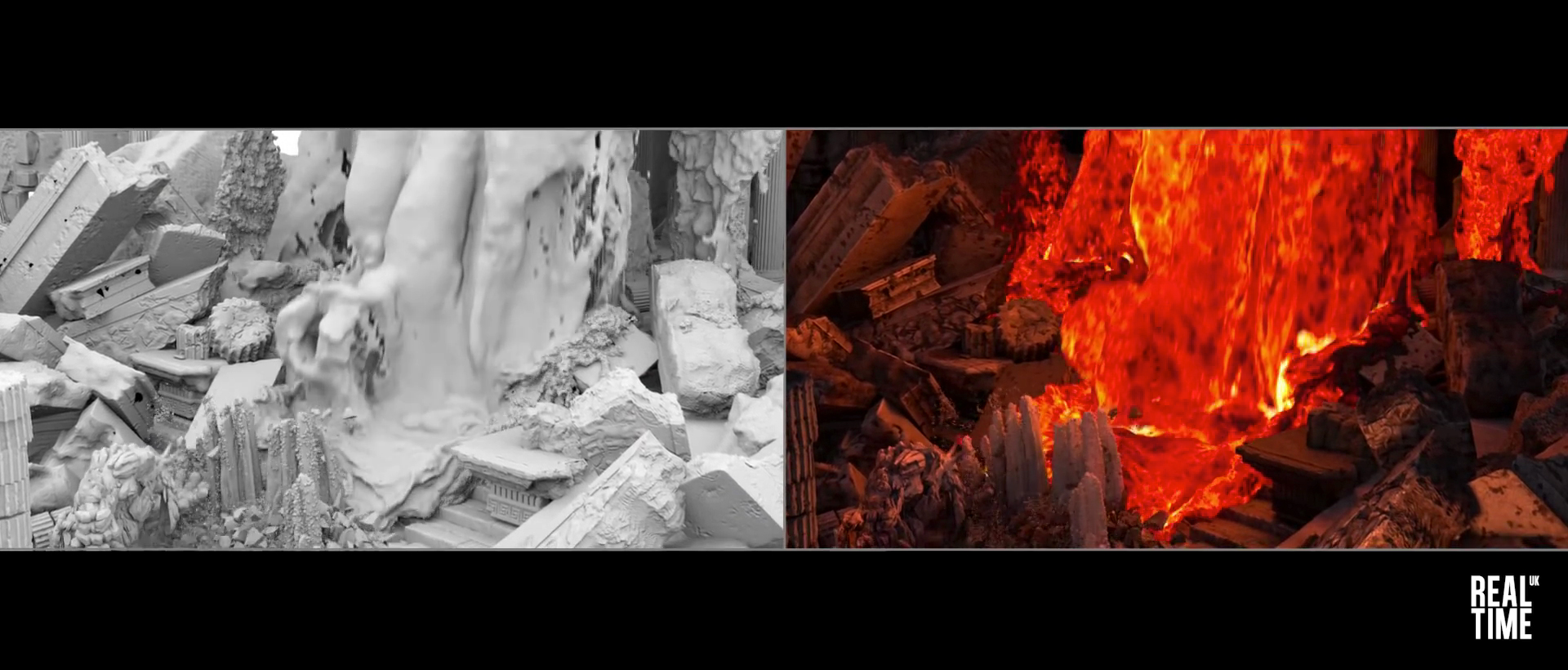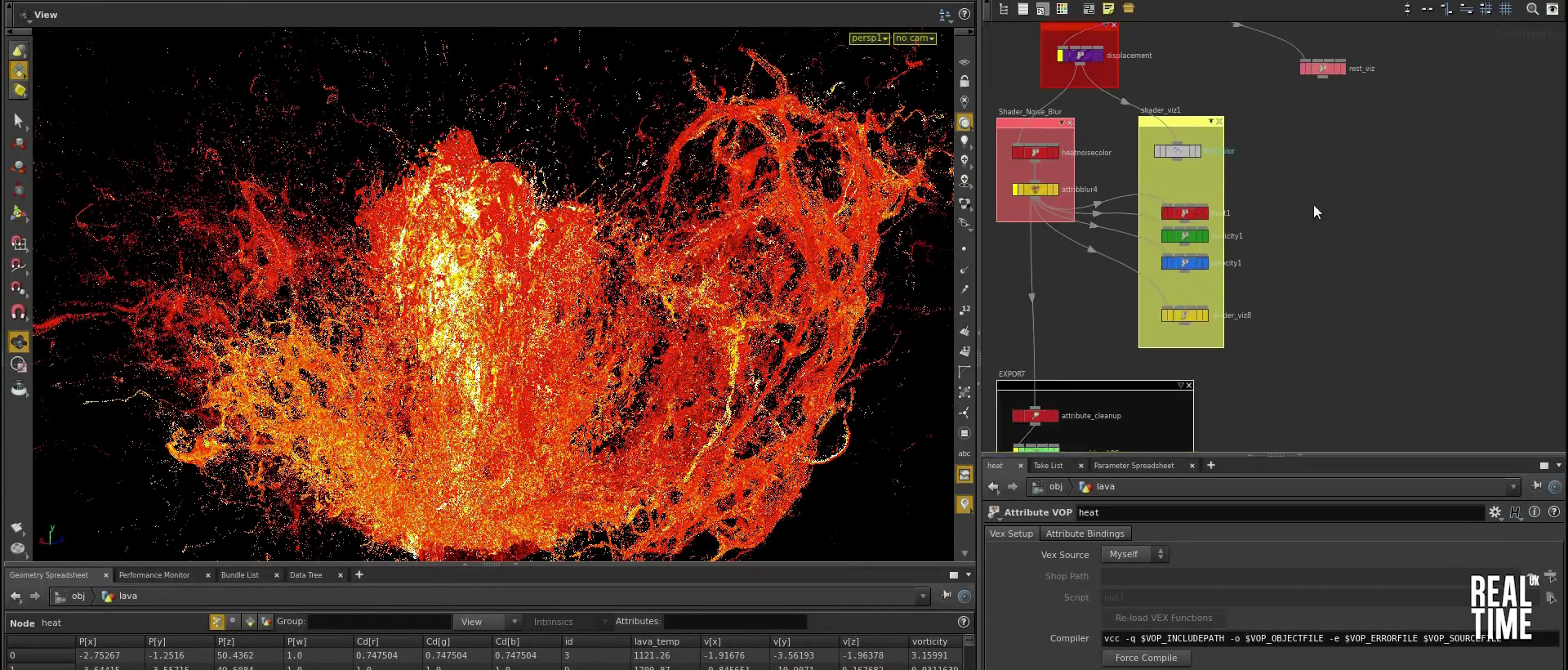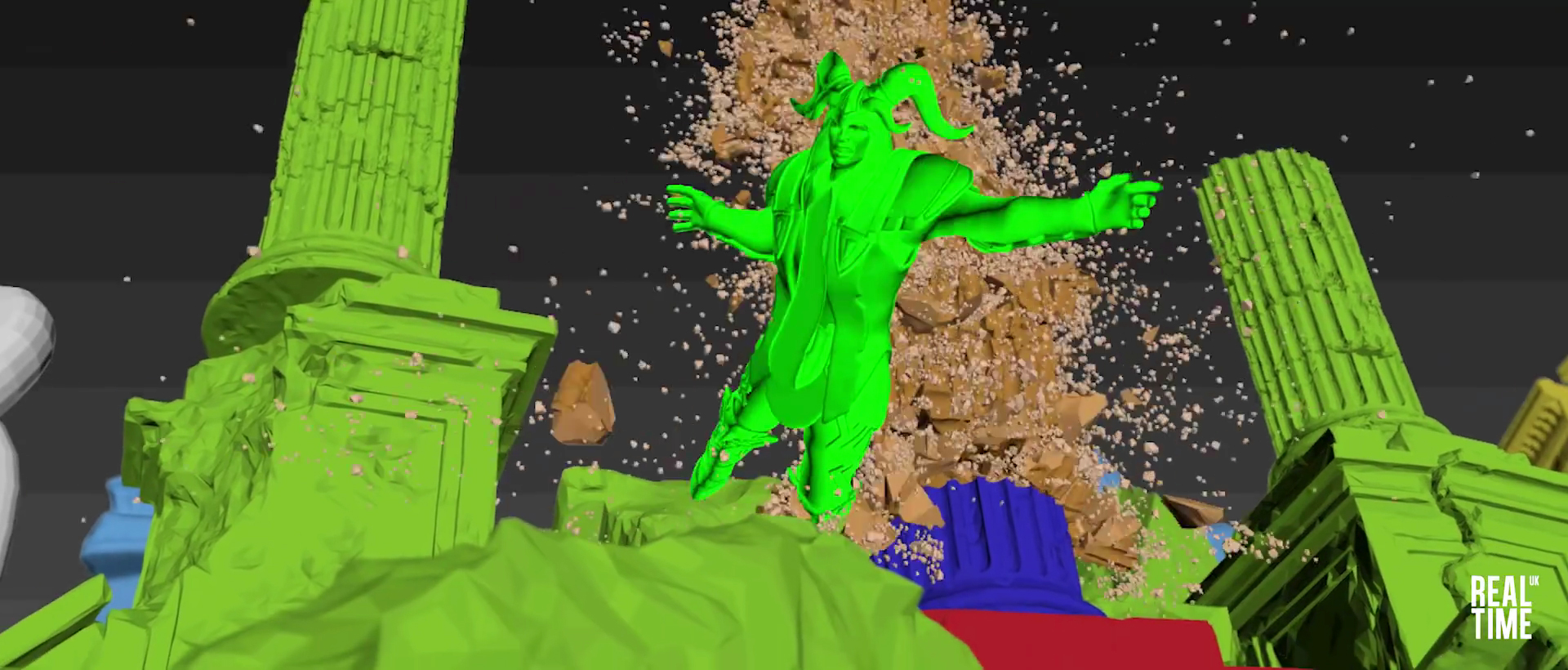Cinematic game trailers can be some of the most challenging digital content to produce - in just three or four minutes the trailer must communicate the ‘spirit’ of the game, tell a compelling story with interesting characters, and impress with stunning graphics and effects. One recent trailer that ticks all of these boxes is RealtimeUK’s SMITE ‘To Hell and Back’, a four minute spectacle in which the game’s characters battle each other using their many and varied powers.
Although the SMITE characters are certainly front and center in the trailer, so too is the game world they inhabit. Some of that world is made up of lava and ice, while other parts get destroyed during the battles. This meant that RealtimeUK had to craft environments and effects almost as if they were their own characters in the trailer. For that, Houdini proved crucial in supporting the game characters and bringing the SMITE trailer to life.
Having simulated water several times in previous trailer work using Houdini, RealtimeUK drew on its experience to realize the lava flows. Here, the lava was designed to always pose a threat to the characters but never quite break through a wall of ice. That meant its direction, speed and its cooling and viscosity all had to be carefully controlled - something easily done inside Houdini.
“The fluid system in Houdini is very powerful and allowed us to easily control the viscosity of the lava with a custom temperature attribute,” says Lead VFX Artist Graham Collier. “As the temperature cools down across the surface it slowly solidifies the fluid. Using volumes, we created zones that would maintain heat and also areas that would cool faster as it got closer to the ice.”
RealtimeUK also used velocity field forces to control the speed and direction of the lava and to force it where artists desired, rather than just relying on its natural flow across the environment. The simulations were all cached to disk with velocity, vorticity, temperature and various other attributes. “In Houdini,” adds Collier, “we can easily re-use this data within Pyro and POP networks allowing us to drive secondary effects such as smoke and embers.”


RealtimeUK’s ability to produce the stunning lava effects in ‘To Hell and Back’ benefited from significant earlier infrastructure work to its pipeline. In particular, the studio now relies on Alembic and VDB formats to implement Houdini into its 3ds Max and V-Ray workflow.
For the trailer, artists began by exporting detailed geometry and animation from 3ds Max using Alembic, as Collier breaks down: “We can read these Alembic files directly in Houdini. We converted this geometry into Volumes using Houdini's VDB workflow. We built VDBs for the full environment as well as animated characters, which were all then cached to disk. These volumes can then be used for collisions with the fluids and converted back to clean low-poly meshes for rigid body sims.”
In Houdini, the simulated geometry data is cached as Alembic files, which could then be read in V-Ray as an Alembic Proxy object. “This was efficient as it would only read the data at render time,” notes Collier. “V-Ray also gives you the option to view full or part meshes in the 3ds Max viewport, which is also very handy to check that everything is lining up correctly.”
Particle simulations are also exported using the same Alembic workflow. “In V-Ray,” adds Collier, “you are able to render each particle as a point or a sphere. The Alembic format also supports UV's, Object IDs and allows you to export custom attributes.”


To shade the lava, RealtimeUK used the custom temperature attribute from the fluid surface, along with, says Collier, “velocity and vorticity to control the look. We could visualise all of this from within Houdini. We exported this data as vertex attributes which were then used to drive the V-ray shaders at render time. Finally, smoke and fire FX were exported by the openVDB format and were also directly rendered in V-Ray using volume grids.”
And it’s not just lava that the game characters had to be weary of. They must also navigate falling ruins and layers of destruction, which RealtimeUK implemented with Houdini’s Bullet solver. With so much destruction taking place around the already character-heavy scenes, the studio looked to Bullet for a fast turnaround.
“We used the Bullet solver in Houdini for destruction effects due to its speed,” explains Collier. “High-detailed geometry was exported from 3ds Max and converted into Volumes using Houdini's VDB workflow. We then converted these volumes to clean low-poly meshes that we could use for collision sources in Bullet.”
Artists pre-fractured geometry using Voronoi fracturing and fracture points. “We used packed primitives to bring all the rigid bodies into the DOP network for simulation,” continues Collier. “We built SOP networks to add additional constraints to the RBDs including glue and cone constraints.”
The fast sim times out of Houdini’s Bullet solver helped RealtimeUK with small simulation tweaks, too. Once they had a solve they were happy with, it would be cached to disk. “This cached simulation would then be analyzed for impacts and fracture data,” says Collier. “From this data we would simulate secondary FX such as small debris and advected dust. These were simulated using Pyro and POP networks.”


Ultimately, RealtimeUK was able to generate complex environments and effects as a ‘living’ world for the SMITE characters to inhabit. But importantly that had to be done fast and with the ability to incorporate plenty of iterations, something the studio directly chose Houdini for.
“I think one of the biggest advantages Houdini gives us is its procedural workflow,” states Collier. “Once you have a set-up that works well you can re-use it over and over by simply changing its inputs. This saves you a lot of set-up time in the future and also allows you to easily update complex simulations, which is important as there are regularly animation amendments, asset updates and director feedback.”
COMMENTS
Please log in to leave a comment.